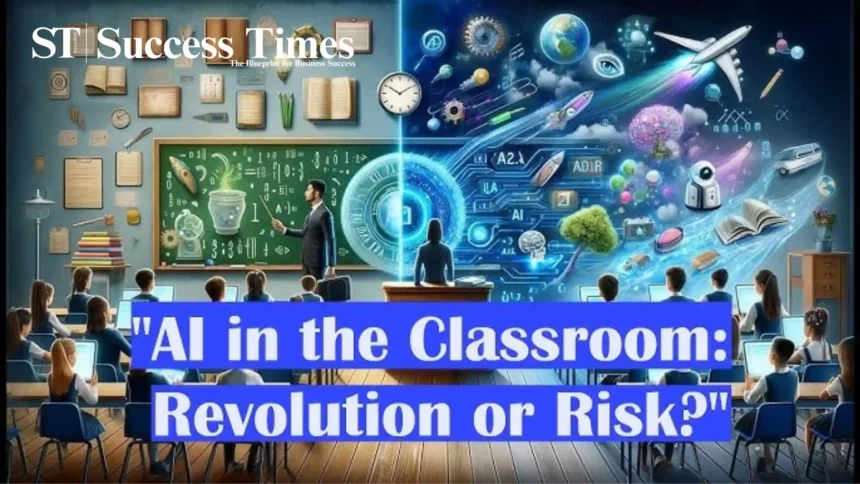AI in Classrooms: Revolution or Risk?
Artificial Intelligence (AI) is entering classrooms globally, with the promise of changing the manner in which students learn and teachers teach. From learning platforms that can tailor lessons to individual students to grading systems that can automatically mark student papers, AI has the potential to transform education. But with change comes necessary questions—might this change be a danger too?
The Promise of AI in Education
AI-based tools can evaluate students’ performance in real time and adjust the lesson plans accordingly. Such personalization is beneficial to overcome individual weaknesses and strengths so that no student is lagging behind. For educators, AI can do the monotonous office work of grading, attendance, and even lesson preparation automatically, leaving more time for teaching. Such tools as AI tutors can provide on-demand assistance to students beyond school hours, providing a more continuous learning process.
Where It Can Go Wrong
Though the advantages are attractive, AI in classrooms isn’t trouble-free. One principal issue is dependence on technology, which would diminish the use of human contact in education. The empathy, mentorship, and inspirational capacity of a teacher are things no formula can produce. Data protection is another grave concern—AI systems tend to gather confidential pupil data, triggering questions about where and how that data is being kept. In addition, AI algorithms can learn prejudices from the data they are trained on and pass them through to deliver unjust results.
Balancing the Scale
The solution is to incorporate AI as a support mechanism, not a substitute for teachers. The schools need to make sure that teachers are trained on how to utilize AI responsibly and that systems are transparent in their operation. Governments and institutions require robust policies to protect data and uphold ethical standards.
The Verdict
AI in the classroom is both a revolution and a risk. Its capacity to tailor learning, save time, and increase access to education is revolutionary. However, without a careful approach, it can undermine human touch in teaching and jeopardize privacy. The future of AI in education must be one where technology leverages the teacher’s role, not substitutes it.
Education has always been about more than just information—it’s about connection, curiosity, and critical thinking. If AI can enhance those values without overshadowing them, it might just be the most powerful classroom assistant we’ve ever seen.







